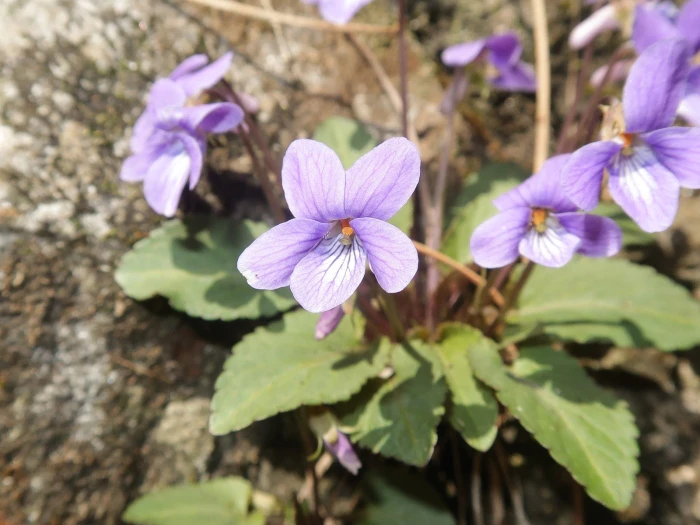Japanese Violet
(Viola japonica)
Japanese Violet (Viola japonica)
/
/

Qwert1234
CC BY-SA 4.0
Image By:
Qwert1234
Recorded By:
Copyright:
CC BY-SA 4.0
Copyright Notice:
Photo by: Qwert1234 | License Type: CC BY-SA 4.0 | License URL: https://creativecommons.org/licenses/by-sa/4.0 | Uploader: Qwert1234 | Publisher: Wikimedia Commons |












Estimated Native Range
Climate Requirements for Birmingham, Alabama
| This Plant | Your Site | Plant Suitability for Your Location | ||
|---|---|---|---|---|
| • Precipitation | 16" - 99" | 56" | Aquatic | Aquatic |
| • High Temp. | 75°F - 91°F | 92°F | Your summers may be too hot for this plant. | Too hot |
| • Low Temp. | 4°F - 50°F | 32°F | Your winter temperatures are normal for this plant | Excellent |
This plant should grow very well at your location but requires an aquatic environment.
Summary
Viola japonica, commonly known as Japanese Violet, is a deciduous perennial herb native to the understory of forests and woodland margins in East Asia, particularly in Japan, Korea, and parts of China. It typically grows to a height and width of 0.5-0.8 feet (0.2-0.2 meters), forming a low, mounding clump. Japanese Violet is characterized by its heart-shaped leaves and small, delicate flowers that come in a variety of colors including purple, pink, white, yellow, and cream. These blooms appear in spring and fall, adding a subtle charm to garden settings.
Japanese Violet is valued for its extended blooming period and its ability to thrive in shaded conditions, making it an excellent choice for woodland gardens, shaded borders, and as a ground cover. It prefers consistently moist, well-drained soil rich in organic matter and can tolerate a range of light conditions from full sun to part shade, though it flourishes best in dappled sunlight. While generally low-maintenance, it can be susceptible to common pests such as aphids and slugs. Gardeners should also be aware that Viola japonica can self-seed and spread, which is a desirable trait for naturalizing areas but may require control in more formal garden settings.CC BY-SA 4.0
Japanese Violet is valued for its extended blooming period and its ability to thrive in shaded conditions, making it an excellent choice for woodland gardens, shaded borders, and as a ground cover. It prefers consistently moist, well-drained soil rich in organic matter and can tolerate a range of light conditions from full sun to part shade, though it flourishes best in dappled sunlight. While generally low-maintenance, it can be susceptible to common pests such as aphids and slugs. Gardeners should also be aware that Viola japonica can self-seed and spread, which is a desirable trait for naturalizing areas but may require control in more formal garden settings.CC BY-SA 4.0
Plant Description
- Plant Type: Herb
- Height: 0.5-0.8 feet
- Width: 0.5-0.8 feet
- Growth Rate: Moderate
- Flower Color: Purple, White
- Flowering Season: Spring, Fall
- Leaf Retention: Deciduous
Growth Requirements
- Sun: Full Sun, Part Shade
- Water: Medium
- Drainage: Slow, Medium, Fast
Common Uses
Bee Garden, Border Plant, Butterfly Garden, Deer Resistant, Edible*Disclaimer: Easyscape's listed plant edibility is for informational use. Always verify the safety and proper identification of any plant before consumption., Fragrant, Low Maintenance, Potted Plant, Rabbit Resistant, Rock Garden, Salt Tolerant, Showy Flowers
Natural Habitat
Understory of forests and woodland margins
Other Names
Common Names: Ko-Sumire
Scientific Names: Viola japonica, Viola kapsanensis, Viola kapsanensis var. albiflora, Viola japonica f. variegata, Viola japonica var. stenopetala, Viola japonica var. variegata, Viola meta-japonica
GBIF Accepted Name: Viola japonica Langsd. ex Ging.